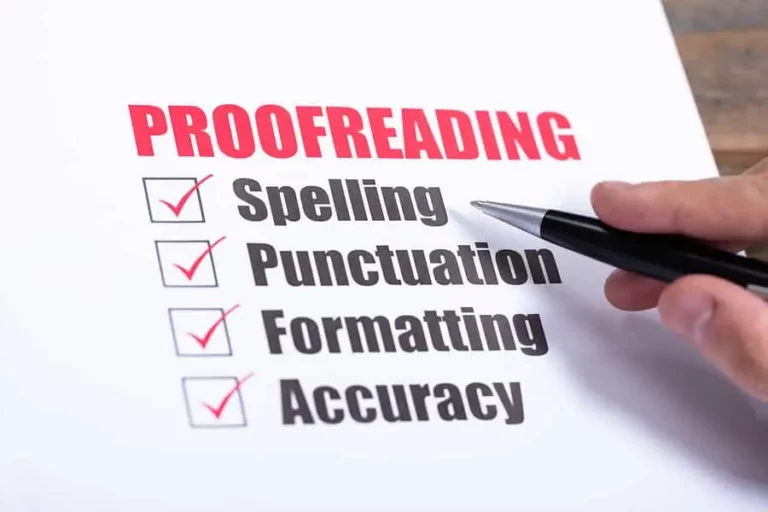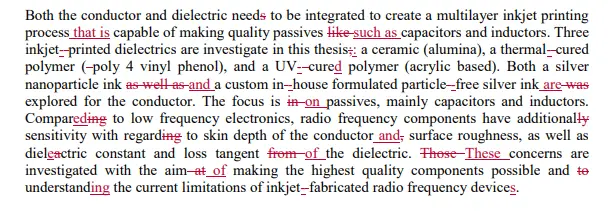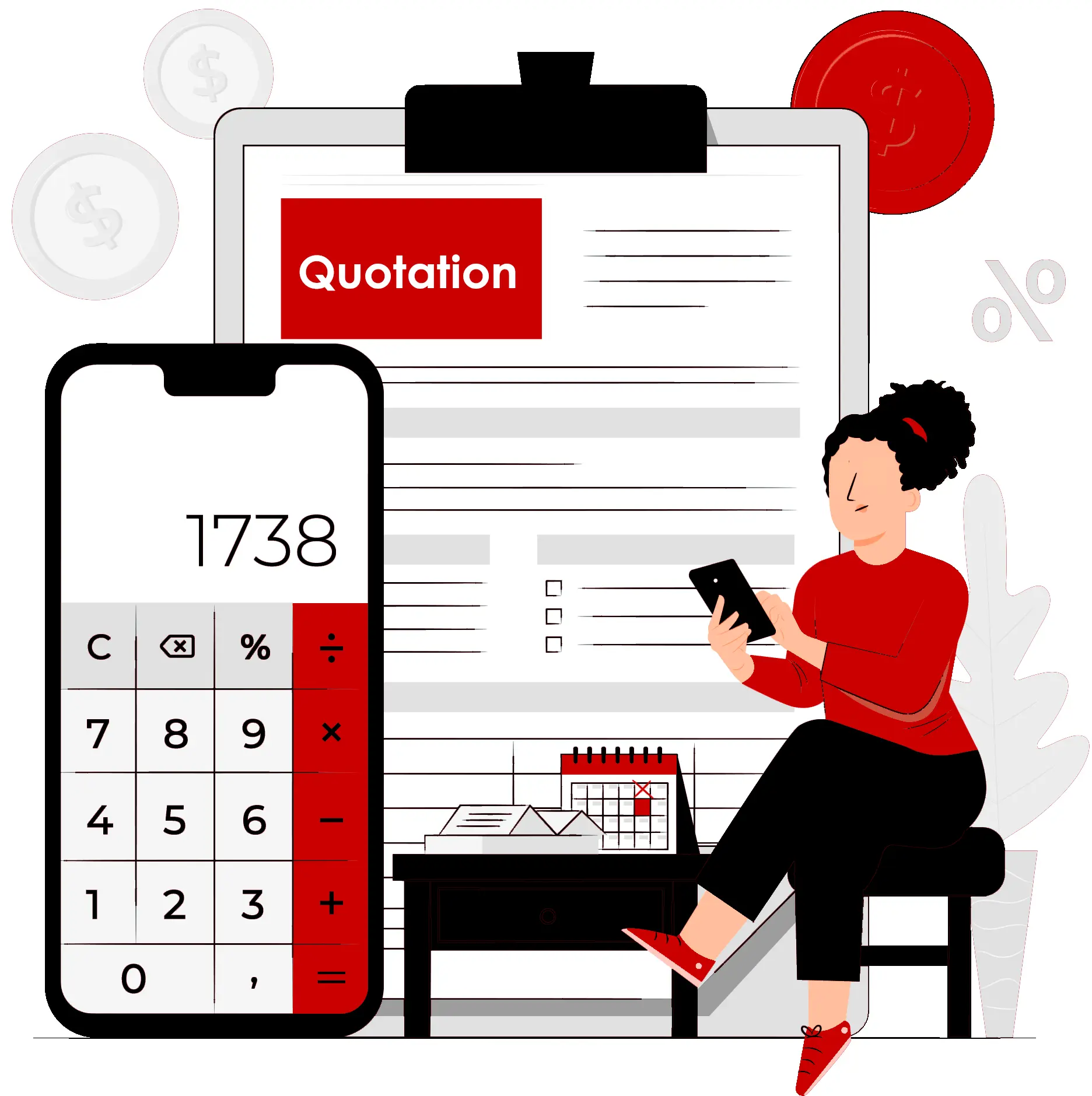Best Online Proofreading Services and Jobs – 2023
Proofreading is the meticulous examination of a text to identify and rectify errors prior to its publication or sharing. It serves as the final step in the writing process, aimed at addressing minor spelling and punctuation mistakes, typos, formatting discrepancies, and inconsistencies.
The significance of proofreading cannot be overstated for any text intended for an audience, be it an academic paper, a job application, an online article, or a printed flyer. Depending on your abilities and financial resources, you have the option to either personally proofread the text or engage the services of a professional proofreader.

What is proofreading?
Proofreading is the process of carefully reviewing a written document for errors and inconsistencies before it is published or shared. It involves checking for spelling mistakes, punctuation errors, grammar issues, and formatting inconsistencies. Proofreading is the final stage in the writing process and ensures that the text is polished and error-free, improving its overall quality and clarity.
But hold on—didn’t we believe that proofreading solely involved rectifying spelling errors? The term “proofreading” has acquired a broader meaning beyond its traditional role in manuscript publication.
Distinguishing Proofreading from Editing
Proofreading and editing are distinct stages in the process of revising a text. Editing encompasses significant modifications to content, structure, and language, whereas proofreading solely addresses minor errors and inconsistencies.
Typically, a text undergoes multiple rounds of editing before reaching the proofreading stage. The following table outlines common steps involved in the editing process:
The Four Stages of Editing and Proofreading:
Step 1: Content Editing Revising an initial draft by making substantial changes to the content, such as reorganizing, adding, or removing entire sections (also known as developmental or substantive editing).
Step 2: Line Editing Refining the language usage to effectively convey the story, ideas, or arguments. This may involve altering words, phrases, and sentences, as well as restructuring paragraphs to enhance the text’s flow.
Step 3: Copy Editing Polishing individual sentences to ensure proper grammar, clear sentence structure, and stylistic consistency, often adhering to specific style guides like APA or MLA. Copy editors do not alter the content but collaborate with the author to improve any ambiguities or awkwardness.
Step 4: Proofreading Thoroughly examining the text for any remaining errors, such as misspelled words, misplaced punctuation, and stylistic inconsistencies. In print publishing, proofreaders also verify formatting elements like page numbers and line spacing.
Error Correction
When people commonly mention proofreading, they are typically referring to the act of meticulously examining a document to identify and correct grammatical, typographical, or formatting mistakes. Proofreading should always be the final stage before a document is shared with its intended audience, whether it’s being published online, submitted to a professor, used for a job application, or any other purpose.
What types of errors are identified and corrected during the process of proofreading?
Before a document reaches the proofreading stage, it should have already undergone editing. This ensures that its content is well-organized, well-written, and easily comprehensible. Editing focuses on improving the document’s overall coherence and clarity, while also addressing any errors.
Proofreading, on the other hand, involves detecting and rectifying both minor and major errors that may have been overlooked or introduced during the editing process. Proofreaders meticulously examine the final draft of the document to ensure it is completely free of grammatical errors (such as subject-verb agreement issues, incorrect word choices, improper punctuation usage, and spelling mistakes), as well as formatting and typographical errors. They also verify that the document adheres to the designated style guide.
Unlike traditional proofreaders in the publishing industry, document proofreaders are not constrained by the number of revisions they can make, as there is typically no additional cost associated with making extensive changes during proofreading. However, if proofreaders determine that significant revisions are still required throughout the document, they may recommend an additional round of editing.
Proofreading Example

What is the difference between proofreading and editing?
Proofreading and editing are distinct stages in the process of reviewing and revising a written document. While both involve improving the quality and clarity of the text, they focus on different aspects and have different objectives.
Editing:
Editing entails a comprehensive assessment and modification of the content, structure, language, and overall presentation of a document. The main goal of editing is to refine and enhance the document’s substance and organization. Editors may suggest substantial changes, such as reorganizing sections, rewriting paragraphs, adding or deleting content, and ensuring logical flow and coherence. Editing addresses issues related to the document’s overall structure, clarity of ideas, effectiveness of arguments, and adherence to the intended purpose or target audience. It is a broader and more substantial process that involves shaping the document’s content and message.
Proofreading:
Proofreading Services, on the other hand, focuses on the final stage of checking a document for errors and inconsistencies before it is published, shared, or finalized. The primary objective of proofreading is to identify and correct minor errors in grammar, spelling, punctuation, syntax, and formatting. Proofreaders carefully review the document to eliminate typos, spelling mistakes, punctuation errors, and other language-related issues. They also ensure that the document adheres to consistent formatting and stylistic conventions. Proofreading is a meticulous and detailed examination that aims to produce an error-free, polished, and professional final version of the document.
Why proofreading is important?
Proofreading is essential for several reasons:
- Error-Free Communication: Proofreading ensures that written content is free from errors, such as spelling mistakes, grammar errors, punctuation errors, and typos. This ensures clear and effective communication with the intended audience, preventing misunderstandings or confusion..
- Professionalism and Credibility: A document that is well-proofread reflects professionalism and attention to detail. It enhances the credibility of the author or organization by demonstrating a commitment to delivering high-quality and accurate work.
- Enhancing Clarity and Coherence: Proofreading helps identify and rectify issues related to sentence structure, syntax, and word choice. By ensuring that the text flows smoothly and coherently, proofreading improves the overall readability and comprehension of the document.
- Consistency and Formatting: Proofreading ensures consistency in formatting, style, and adherence to specific guidelines or style manuals. It helps maintain uniformity throughout the document, presenting a polished and professional appearance.
- Error Prevention: Proofreading is a proactive step in catching and correcting errors before the document is published or shared. It helps prevent embarrassing or costly mistakes that may affect the reputation of the author, organization, or publication.
- Quality Assurance: By eliminating errors and inconsistencies, proofreading enhances the overall quality and professionalism of the written work. It demonstrates a commitment to producing high-quality content and reflects positively on the author or organization.
Working with professional Proofreading company
Working with a professional proofreading company can offer several benefits:
- Expertise and Experience: Professional proofreading and Translation companies employ skilled and experienced proofreaders who have expertise in language, grammar, and editing. They have a keen eye for detail and are well-versed in various style guides and industry standards. Their expertise ensures thorough and accurate proofreading of your documents.
- Quality Assurance: Professional proofreading companies have rigorous quality control processes in place to maintain high standards. They ensure that your documents undergo multiple rounds of review by different proofreaders, ensuring thorough error detection and correction. This helps deliver polished and error-free content.
- Specialized Services: Many professional proofreading companies offer specialized services tailored to different industries or document types. Whether you need proofreading for academic papers, business documents, creative writing, or technical content, they can provide targeted assistance and address specific requirements.
- Time Efficiency: Outsourcing proofreading to a professional company allows you to save time and focus on other aspects of your work or business. The proofreaders can efficiently handle the task, providing prompt turnaround times while maintaining accuracy and quality.
- Confidentiality and Security: Professional proofreading companies prioritize confidentiality and data security. They have measures in place to protect your sensitive information and ensure that your documents are handled with utmost care and privacy.
- Client Support and Communication: Reputable proofreading companies often have excellent customer support and communication channels. They are responsive to your inquiries, provide updates on the progress of your project, and address any concerns or queries you may have.
When choosing a professional proofreading company, consider factors such as their reputation, reviews from previous clients, pricing structure, turnaround times, and the range of services they offer. It’s also helpful to inquire about their proofreaders’ qualifications and the company’s commitment to quality assurance.
How much a professional proofreading cost?
The cost of professional proofreading can vary depending on several factors:
- Length and Complexity of the Document: The total word count and the complexity of the content can influence the cost. Longer documents or those with specialized subject matter may require more time and effort from the proofreader, affecting the overall cost.
- Turnaround Time: Urgent or expedited proofreading services typically come with higher rates due to the need for immediate attention and prioritization.
- Level of Editing Required: If the document needs more than just basic proofreading, such as extensive editing or rewriting, the cost may be higher to reflect the additional work involved.
- Specific Requirements: Certain document types, such as academic papers or technical manuscripts, may require specialized knowledge or adherence to specific style guides. Proofreading services tailored to these requirements may have different pricing structures.
- Service Provider: Different proofreading companies or individual proofreaders may have their own pricing models based on their expertise, reputation, and market rates. Rates can vary between providers.
Our pricing starts from 0.012 USD per word, depending the requirement it may Increase.
How long does proofreading Services takes?
The duration of proofreading can vary depending on various factors, including:
- Length of the Document: Naturally, the longer the document, the more time it will take to proofread. A short article or a few pages of text may be proofread relatively quickly, while a lengthy manuscript or a complex document could require several hours or even days.
- Complexity and Content of the Document: The complexity of the content can impact the time needed for proofreading. Documents with technical or specialized terminology, intricate formatting, or intricate subject matter may require additional time for thorough proofreading.
- Quality and Condition of the Document: If the document has undergone extensive editing or revisions, it may require more careful review during proofreading. Documents that have significant errors or inconsistencies may require additional time for correction.
- Experience and Efficiency of the Proofreader: The proficiency and experience of the proofreader can affect the time required for proofreading. Experienced proofreaders are typically more efficient at identifying and correcting errors, which can help expedite the process.
- Turnaround Time: The timeline or deadline provided for proofreading can also impact the duration. If a document needs to be proofread urgently, it may require dedicated attention and faster turnaround, which can affect the time taken.
It is important to discuss the specific timeframe with the proofreader or professional proofreading service you are working with. They will provide you with an estimate based on the factors mentioned above, taking into account the document’s specifics and their workload. Clear communication about timelines and expectations can help ensure timely completion of the proofreading process.
Proofreading Tips
- Develop self-awareness: Take a moment to identify your own writing habits and common errors. Focus on those specific areas when proofreading, such as overused words or frequent typos.
- Read aloud: Reading your work out loud helps you spot mistakes that your eyes might miss. This is particularly useful when reading on a screen, as your eyes can tire quickly. Consider reading with someone else to catch awkward phrases or sentences.
- Focus on one task at a time: Avoid trying to perfect everything in a single read-through. Effective proofreading requires multiple rounds, each with a specific focus. Separate tasks like checking for spelling errors and reviewing homonyms to ensure thoroughness and accuracy. Trying to multitask may result in overlooking errors.
Note: The original text has been modified for clarity and conciseness.
Proofreading Tools
Proofreading tools are helpful resources that can assist in identifying errors, improving writing quality, and enhancing the proofreading process. Here are some commonly used proofreading tools:
- Spell Checkers: Built-in spell checkers in word processing software, web browsers, and writing applications can automatically highlight misspelled words and provide suggested corrections.
- Grammar Checkers: Grammar checking tools, such as Grammarly and ProWritingAid, analyze text for grammar, punctuation, and sentence structure errors.
They offer suggestions for corrections and provide explanations for grammar rules. - Style Guides and Manuals: Style guides like The Chicago Manual of Style or APA Style provide guidelines for proper formatting, citation, and writing style.
They help ensure consistency and adherence to specific writing conventions. - Plagiarism Checkers: Plagiarism detection tools, such as Turnitin and Copyscape, can identify instances of copied or unoriginal content by comparing text against a vast database of sources.
- Editing Software: Advanced editing software, like Hemingway Editor and AutoCrit, offer features to improve readability, sentence structure, and overall writing style.
They highlight complex sentences, excessive adverbs, passive voice, and other potential areas of improvement. - Online Dictionaries and Thesauruses: Online dictionaries, such as Merriam-Webster or Oxford English Dictionary, provide definitions, synonyms, and antonyms. Thesauruses help find alternative words and expand vocabulary.
- Text-to-Speech Tools: Utilizing text-to-speech converters can help in hearing the text aloud, which can aid in identifying awkward phrasing, sentence flow, and errors that may have been missed while reading silently.
It’s important to note that while these tools can be valuable, they should be used as aids and not relied upon entirely. Human proofreading and critical thinking are still crucial for achieving the best results.
Proofreading Marking
Proofreading marking, also known as proofreading symbols or proofreading marks, is a set of standardized symbols used to indicate specific changes or corrections that need to be made in a written document. These marks are typically used by proofreaders, editors, or teachers to communicate suggested edits to the author or to indicate changes that should be made before the final version of the document is published or shared.
Here are some common proofreading marks:
- Insertion: A caret symbol (∧) is used to indicate where a word, punctuation mark, or other text should be added.
- Deletion: A line through a word or section of text (∅) signifies that it should be deleted.
- Transposition: Arrows (↔) are used to indicate the swapping or rearrangement of words or phrases.
- Capitalization: A circle or underline beneath a letter or word indicates that it should be capitalized.
- Punctuation: Symbols such as a caret for inserting punctuation marks (∧), a backward slash to indicate a missing punctuation mark (\), or a squiggly line beneath incorrect or misplaced punctuation (~) are commonly used.
- Spelling: A wavy line or squiggly line beneath a word (~) indicates a spelling error.
- Marginal Notes: Additional comments or suggestions for the author may be written in the margins of the document.
It’s important to note that specific proofreading marks may vary slightly depending on the style guide or personal preference of the proofreader. It is helpful for the author and the proofreader to establish a clear understanding of the marking system being used to ensure effective communication and accurate revisions.
Proofreading Meaning in Multiple Languages
Proofreading refers to the act of carefully examining a written document or text to detect and correct errors in grammar, spelling, punctuation, syntax, and formatting. It involves meticulously reviewing the content to ensure its accuracy, clarity, and coherence. Proofreading is an essential step in the writing and publishing process, aiming to eliminate any mistakes or inconsistencies and improve the overall quality and professionalism of the written work. It helps ensure that the final version of the document is error-free and effectively communicates the intended message to the audience.
Proofreading meaning in Tamil :
சரிபார்த்தல் என்பது இலக்கணம், எழுத்துப்பிழை, நிறுத்தற்குறிகள், தொடரியல் மற்றும் வடிவமைத்தல் ஆகியவற்றில் உள்ள பிழைகளைக் கண்டறிந்து சரிசெய்ய எழுதப்பட்ட ஆவணம் அல்லது உரையை கவனமாக ஆய்வு செய்வதைக் குறிக்கிறது. உள்ளடக்கத்தை அதன் துல்லியம், தெளிவு மற்றும் ஒத்திசைவை உறுதிசெய்ய உன்னிப்பாக மதிப்பாய்வு செய்வதை உள்ளடக்கியது. சரிபார்த்தல் என்பது எழுத்து மற்றும் வெளியீட்டுச் செயல்பாட்டில் இன்றியமையாத படியாகும், இது ஏதேனும் தவறுகள் அல்லது முரண்பாடுகளை நீக்கி, எழுதப்பட்ட படைப்பின் ஒட்டுமொத்த தரம் மற்றும் தொழில்முறையை மேம்படுத்துவதை நோக்கமாகக் கொண்டுள்ளது. ஆவணத்தின் இறுதிப் பதிப்பு பிழையின்றி இருப்பதையும் பார்வையாளர்களுக்கு உத்தேசித்துள்ள செய்தியை திறம்பட தெரிவிக்க உதவுகிறது.
Proofreading meaning in Hindi :
प्रूफरीडिंग व्याकरण, वर्तनी, विराम चिह्न, वाक्य-विन्यास और स्वरूपण में त्रुटियों का पता लगाने और उन्हें ठीक करने के लिए लिखित दस्तावेज़ या पाठ की सावधानीपूर्वक जाँच करने के कार्य को संदर्भित करता है। इसमें इसकी सटीकता, स्पष्टता और सुसंगतता सुनिश्चित करने के लिए सामग्री की सावधानीपूर्वक समीक्षा करना शामिल है। प्रूफरीडिंग लेखन और प्रकाशन प्रक्रिया में एक आवश्यक कदम है, जिसका उद्देश्य किसी भी गलती या विसंगतियों को खत्म करना और लिखित कार्य की समग्र गुणवत्ता और व्यावसायिकता में सुधार करना है। यह सुनिश्चित करने में मदद करता है कि दस्तावेज़ का अंतिम संस्करण त्रुटि-मुक्त है और दर्शकों को इच्छित संदेश को प्रभावी ढंग से संप्रेषित करता है।
Proofreading meaning in Marathi :
प्रूफरीडिंग म्हणजे व्याकरण, शब्दलेखन, विरामचिन्हे, वाक्यरचना आणि स्वरूपनातील त्रुटी शोधण्यासाठी आणि दुरुस्त करण्यासाठी लिखित दस्तऐवज किंवा मजकूराचे काळजीपूर्वक परीक्षण करणे. यात सामग्रीची अचूकता, स्पष्टता आणि सुसंगतता सुनिश्चित करण्यासाठी काळजीपूर्वक पुनरावलोकन करणे समाविष्ट आहे. लेखन आणि प्रकाशन प्रक्रियेतील प्रूफरीडिंग ही एक आवश्यक पायरी आहे, ज्याचा उद्देश कोणत्याही चुका किंवा विसंगती दूर करणे आणि लिखित कार्याची एकूण गुणवत्ता आणि व्यावसायिकता सुधारणे आहे. हे सुनिश्चित करण्यात मदत करते की दस्तऐवजाची अंतिम आवृत्ती त्रुटी-मुक्त आहे आणि इच्छित संदेश प्रभावीपणे प्रेक्षकांपर्यंत पोहोचवते.
Proofreading meaning in Bengali :
প্রুফরিডিং বলতে বোঝায় ব্যাকরণ, বানান, বিরাম চিহ্ন, সিনট্যাক্স এবং বিন্যাসে ত্রুটি সনাক্ত এবং সংশোধন করার জন্য একটি লিখিত নথি বা পাঠ্য সাবধানে পরীক্ষা করার কাজ। এর যথার্থতা, স্বচ্ছতা এবং সুসংগততা নিশ্চিত করার জন্য বিষয়বস্তুটি সাবধানতার সাথে পর্যালোচনা করা জড়িত। প্রুফরিডিং লেখা এবং প্রকাশনা প্রক্রিয়ার একটি অপরিহার্য পদক্ষেপ, যার লক্ষ্য যে কোনো ভুল বা অসঙ্গতি দূর করা এবং লিখিত কাজের সামগ্রিক গুণমান এবং পেশাদারিত্ব উন্নত করা। এটি নিশ্চিত করতে সাহায্য করে যে নথির চূড়ান্ত সংস্করণটি ত্রুটি-মুক্ত এবং কার্যকরভাবে দর্শকদের কাছে উদ্দেশ্যমূলক বার্তাটি যোগাযোগ করে।

Request a Quote Now
What People Say About Us
The Quality of the output and the prompt delivery on the said date are their special quality. Their follow up work after the translation in case of any changes are examples of extra mile they provide
K V Rajan
L&D Director Coca-Cola Bottling Company of Bahrain & Qatar
We are pleased with the services of Abayam Translation Services The quality of work is extremely good and we definitely look forward to working with Abayam for all our multi lingual translation services
Ganesh Kumar
Madhura Micro Finance












